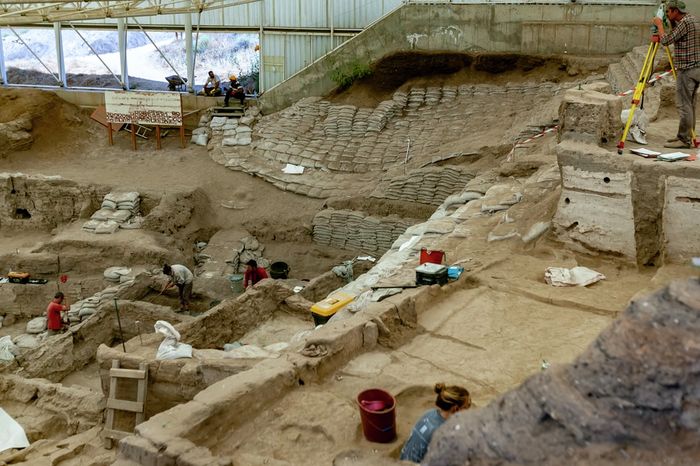Thinking like an anthropologist in Cambridge
Anthropology – what exactly is it? Social science? A ‘science’ at all? Heather Cameron opens the door to a world of ethnographies, observations, and our oh-so-predictable sense of humour

There is a lesser-known subspecies of the Cambridge social scientist. We go by the name ‘anthropology’’. In my third year, the degree’s end is looming... I am getting increasingly uneasy: I don’t really know what anthropology is. A definition would tell us, anthropology is the study of human societies and cultures. The problem is, what it means to study ‘societies’ and ‘cultures’ involves questioning if these really exist at all. And if they do exist, is that only a figment of the anthropologists’ own worldview?
Fortunately, or unfortunately, I am not the only one to be bamboozled by what anthropology is. Anthropologists seem, perhaps more than any other discipline, to actively question not only their disciplinary canon, but also the very fundamentals of their discipline: what do we study? Why do we study that? How do we study that? Who are ‘we’ anyway?
Anthropology’s project, then, seems to be to deconstruct its very subject and objectives. Do any other sciences do this?
Whatever anthropology is, something it does, is to reveal the significance of mundanities. It helps ‘make the strange familiar and the familiar strange’ - the words from. ‘Think like an anthropologist’ (Matthew Engelke’s bestselling book) have been life-giving to me over the last few years, as I navigate the perplexities of life in Cambridge and in Covid…Everyday life holds an essential value just because it is. And anthropology can give you the tools with which to unpick what is so significant. I would like to give you an example of how this might work - with an analogy of gardening.
Whatever anthropology is, what it does is ‘ethnography’. This is the systematic study of a group of people. An anthropologist will live and work alongside people (who they call ‘interlocutors’) to observe and participate in their lives. Afterwards they will write up their observations and deliberations, with reference to previous anthropology. So, for our analogy, let’s ‘do’ an ethnography right here in Cambridge. I have started gardening with the college gardening team once a week. This has yet, if ever, to lose its initial excitement. Donning gloves, heavy duty boots (far too big for me), and best of all gardening trousers which if you don’t know what they are, your life is about to reach a new horizon of possibility. Perfect for an ethnography.
Come with me to the garden! A tree-lined avenue, autumnal leaves spreading serotonin like fairy dust, and grass corrupted with little holes? You’ve got it. It’s bulb planting time. Take the bulbs, empty them into a bucket, pour a little water over them. Then bung the chilli-powder in and mix! This heat will stop any squirrels eating the bulbs before they can grow into daffodils and crocuses. If you keep the turf attached when you make the hole, like an open lid, then the squirrels will be even more in the dark. The appearance of the ground is very deceptive when the turf is placed back on-top and stomped-down in place.
"Anthropology’s project, then, seems to be to deconstruct its very subject and objectives. Do any other sciences do this?"
As we squatted and the bulbs settled into their holes, people would walk past along the avenue. Students, construction team, fellows, administration staff… And in my two hours, I counted no less than five people making the exact same joke. The gardeners said they made it twelve over the whole day. It went something along the lines of...
“Hello, [George/Bob/Sue/etc]. You’ve got a right problem with moles by the looks of it!”
The joke, to explain, is a suggestion that the holes are made by moles, which is ironic because the gardeners have dug the holes (as necessary to plant bulbs).The gardeners would have a generic, yet personalized, response:
“Oh, that’s a good one, [Phil/Anne/Beth]. The moles!”
Let’s get one thing clear. The joke is actually quite funny, the first time. Perhaps even the second time. But, five times in the past two hours? Twelve in a day?
Let’s stop a minute and ask what is significant here - anthropology style:
Each time a joker passed, they individually created the mole humour. As far as I’m aware, there was no mole conspiracy, no prearrangement to spread the mole message to us gardeners. It is fair to suppose, then, that no fewer than twelve people that day observed, imagined, delivered, and responded, each of their own accord.
"When you zoom out, sometimes these patterns are clearly part of a bigger picture"
Next, I noticed the mole humour, and I counted. But it was not only me who did so. The other gardeners also had noticed, and also had counted. They were even the ones delivering the responses! So what?
Each mole-joker, and each mole-hearer, are persons of their own being, with different homes to return to, different lunches eaten, different childhood misdemeanours, different iris patterns…
But so too, each mole-joker created a joke about moles, and each mole-hearer observed a concurrence… For the purposes of this ethnography then, there can be noted a pattern of behaviour: a pattern of moles. This pattern emerged, despite or perhaps because the mole-jokers thought they were the only ones to do so.
How often do we think we are the only ones, to discover our next-door neighbour also has migraines/worries about in-grown-toenails/loves hot chocolate? These solo-complexes are a spectrum, from overwhelming confidence and egotism, to overwhelming low self-esteem and isolation. But the thing is, twelve people that day made a joke about moles…
Remember, I do not know what anthropology is. But I do know a bit about what anthropology does. One thing it does, through ethnography, is to notice patterns in mundanities. Like the mole conundrum we have just seen. These patterns are noticed from observing a small group of interlocutors. Afterwards, when you zoom out, sometimes these patterns are clearly part of a bigger picture. I will leave you to answer what the bigger picture is of our mole story - and how that is relevant to your own. What does it reveal about our sense of individuality? What does it suggest about the potential for unity across differences? And what does it mean for the future of human and mole relations?
 News / Cambridge study finds students learn better with notes than AI13 December 2025
News / Cambridge study finds students learn better with notes than AI13 December 2025 News / Cambridge Vet School gets lifeline year to stay accredited28 November 2025
News / Cambridge Vet School gets lifeline year to stay accredited28 November 2025 Science / Did your ex trip on King’s Parade? The science behind the ‘ick’12 December 2025
Science / Did your ex trip on King’s Parade? The science behind the ‘ick’12 December 2025 News / Uni Scout and Guide Club affirms trans inclusion 12 December 2025
News / Uni Scout and Guide Club affirms trans inclusion 12 December 2025 Arts / Modern Modernist Centenary: T. S. Eliot13 December 2025
Arts / Modern Modernist Centenary: T. S. Eliot13 December 2025








